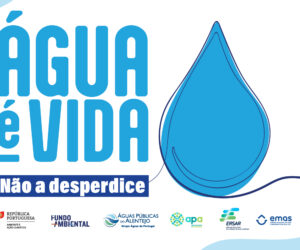It is increasingly difficult to know what is real and what is not, in the world of news, whether digital or not, where the fake news and deepfakes pose a significant threat to modern society, undermining confidence in information and potentially distorting reality, also having the potential to shape opinions.
Colonel of the GNR
Master in Law and Security and Homeland Security Auditor
As fake news is fake news disseminated with the aim of deceiving or manipulating the public, and can be disseminated through different means of communication, mostly digital, like social media, fake news pages and even traditional media outlets.
While the deepfakes are videos or audio digitally manipulated to appear authentic, that can resort to the use of artificial intelligence and deep learning, almost always with the intention of defaming individuals or spreading misinformation, with the first examples occurring in the United States of America (USA), whose main targets were political figures.
One of the most striking examples of fake news This is the case called âPizzagateâ em 2016, In the USA, where fake news suggested that Hillary Clinton and other Democratic politicians were involved in a sex trafficking ring at a Washington pizzeria, D.C, This theory has been widely circulated on social media, despite having no basis in reality and having been denied by police authorities, leading to real death threats, against the owner of the establishment and his employees.
And one of the first examples of deepfake ocorreu em 2019, when one video awarded to the Speaker of the US House of Representatives, Nancy Pelosi, was manipulated to make it appear that she was drunk or had health problems, This video was widely shared on social media, realizing the full potential of deepfakes to spread misinformation and defame public figures.
Both cases illustrate how fake news and deepfakes can have real and harmful consequences, highlighting the importance of being attentive and verifying the veracity of information before believing or sharing.
These phenomena are as harmful or more harmful, when it is common knowledge, that people are increasingly interested in the information conveyed through social networks, especially the youngest, where they form their opinion, namely the policy.
As fake news and deepfake have the potential to go around the world, with a simple click, with the aggravation of the perpetrators of fake news are becoming increasingly sophisticated, as the financial incentive also grows, serving to sponsor pages that propagate fake news and deepfake, that are shared immediately, without investigating the origin, giving them as credible.
Therefore, it is important to check the sources of news or information before sharing or believing them., must check whether the news comes from a reliable source and whether it has been corroborated by other sources.
Whenever you have doubts, You should use reliable fact-checking pages to confirm the veracity of information or news, there are currently several that are dedicated to investigative journalism and that do this work, and who also resort to the use of technology, namely the use of detection algorithms fake news and deepfakes, that help filter false content on social networks and the internet in general.
Attention to detail is very important, so you should be alert to clues that news may be fake, such as grammatical errors, sensationalist information or anonymous sources.
Also very important is your level of digital education, therefore promoting your digital education to enable you to recognize and deal with fake news and deepfakes, whose first step is to know that they exist and that is why it is very important for this education to start early in school, because today our students, they start digital navigation very early, almost always through smartphones.
With greater digital education comes greater responsibility, Therefore, each of us has a responsibility not to contribute to the spread of misinformation and before sharing something, think about whether you are contributing to the problem or the solution.
And finally, regulation, where authorities should consider implementing appropriate regulations to combat the spread of fake news and deepfakes, without compromising freedom of expression, Therefore, when these preventive measures are adopted, they will certainly promote a culture of responsibility and verification of news and information, thus being able to help mitigate the negative effects of fake news and deepfakes in society.
We end by reminding you that fake news or videos, Misleading or dubious are harmful in countless ways, with the main objective of misinforming the public, without forgetting the pseudoscientific reports, without research, reasoning or peer review, which can have serious implications on public health, as well as urban legends, which are often utilized as real news, that only a mature and informed public can combat, It is normally in pre-election moments that this phenomenon has greater expression.

























